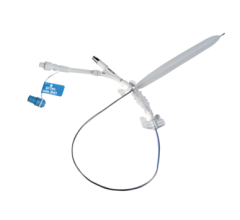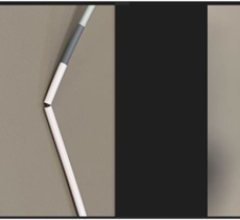
The In.Pact Admiral drug-coated balloon.
November 7, 2019 — Real-world, four-year study results of the In.Pact Admiral drug-coated balloon (DCB) demonstrate long-term, sustained clinical benefit and safety with low amputation and mortality rates in peripheral artery disease (PAD) patients treated with the device. The late-breaking 4-Year Outcomes From the IN.PACT Global Study were presented at the 2019 Vascular Interventional Advances (VIVA) annual meeting.
Furthermore, the results demonstrate long-term effectiveness in claudicants and CLI patients through four years and support the use of a DCB for the treatment of femoropopliteal disease, explained Professor Thomas Zeller, M.D., Ph.D., Universitaets-Herzzentrum, Bad Krozingen, Germany, who presented the results.
The IN.PACT Global Study is a prospective, multicenter, single-arm study conducted at 64 international sites. Patients with complex lesions were enrolled, including bilateral disease, multiple lesions, TASC A through D, de novo, in-stent restenosis, long lesions, and chronic total occlusions. The 1,406 intent-to-treat patients (1,773 lesions) were treated with the In.Pact Admiral drug-coated balloon (DCB) (Medtronic) and analyzed as a part of the consecutively enrolled clinical cohort, with safety and revascularization events reviewed by an independent clinical events committee.
Assessments through 48 months were freedom from clinically driven target lesion revascularization (CD-TLR) and the safety endpoint, which was a composite of freedom from device- and procedure-related mortality through 30 days, freedom from major target limb amputation, and clinically driven target vessel revascularization through 48 months after the index procedure.
The mean patient age in the clinical cohort was 68.6 ± 10.1 years, and 67.8% were male. The mean lesion length was 12.09 ± 9.54 cm, including 18% in-stent restenosis, 35.5% total occlusions, and 68.7% calcified lesions. The Kaplan-Meier estimate of freedom from CD-TLR through 48 months was 73.4%. The cumulative incidence of the safety composite endpoint was 71.9%, with a low major target limb amputation rate (1.1%) through 48 months. The Kaplan-Meier estimate of freedom from all-cause death through 48 months was 83.5%. In an additional analysis, the Kaplan-Meier estimate of freedom from CD-TLR was 74.5% for claudicants and 64.8% for critical limb ischemia (CLI) patients.
Find information on all the VIVA 2019 Late-breaking Clinical Trials


 June 13, 2024
June 13, 2024 








